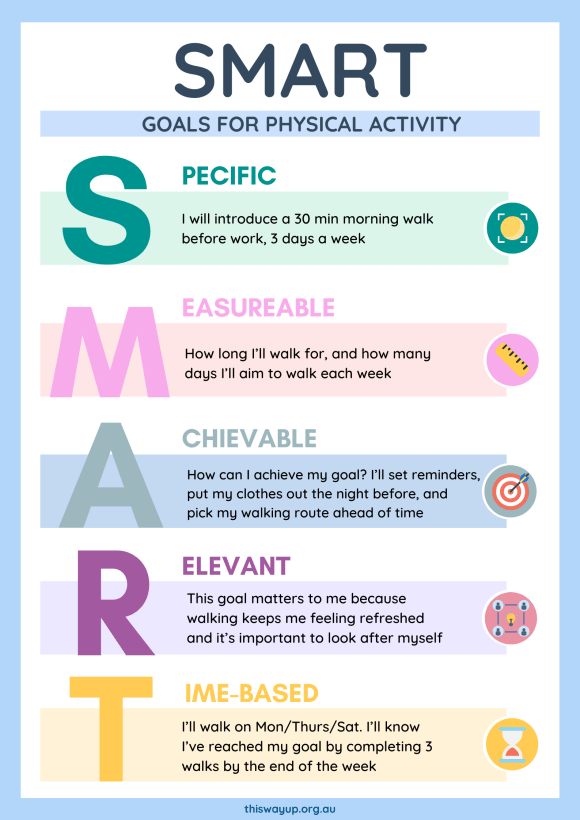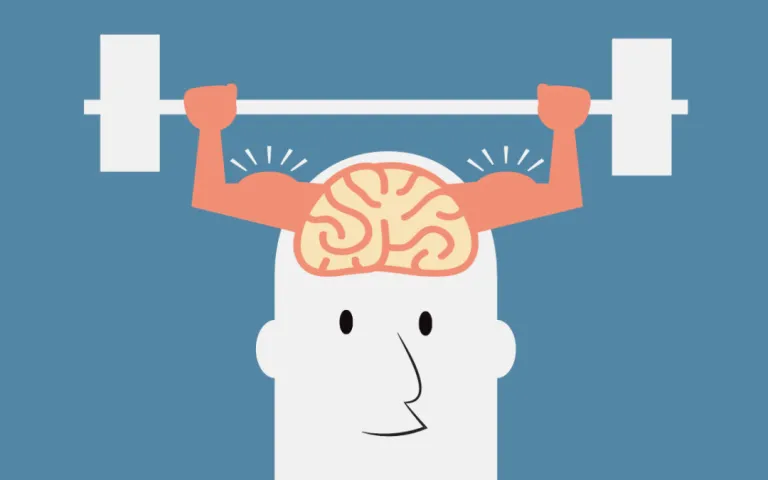We know that exercise has many physical benefits from improved strength, flexibility, cardiorespiratory fitness, intestinal health, and prevention of diabetes, cholesterol and some cancers. But there is more to exercise than just the physical.
Exercise does a whole lot of things to our body and mind and our brain actually needs movement to feel good.
A recent study found that engaging in physical activity could reduce your chances of developing depression by 17%. We also know that exercise has a significant effect on reducing symptoms of depression and anxiety. Exercise has also been found to be a useful tool in stress management and helps with sleep. Some studies have suggested that exercise is as effective as medication or therapy while others have found it best as an adjunct to treatments helping to reduce medication doses.
How does exercise help with mental health?
- Release of endorphins – these are our brains natural chemical messenger (neurotransmitters) that helps in the regulation of our mood, sleep, appetite and pain. These neurotransmitters interact with receptors in your brain to trigger a positive feeling in the body and can reduce your perception of pain. It is these chemicals that give you that happy feeling after exercise.
- Other happy hormones are released when we exercise. These include serotonin (happy hormone), norepinephrine (can be low in depression and chronic pain making it hard to wake up the brain and get it going), and dopamine (the motivational molecule often low in depression).
- Exercise helps to regulate the stress response and cortisol levels in your body leading to a more balanced response to stress.
- Helps to modulate our autonomic nervous system from sympathetic (fight and flight response) back to our parasympathetic (rest and digest) response leaving our body and mind in a calmer and composed state.
- Increases blood flow, neural pathways and growth in the brain keeping it young and adaptable, improving your thinking and memory function.
- Inflammation may play a role in depression, anxiety and stress. Exercise helps to create an anti-inflammatory environment in the body and brain and helps to improve symptoms of poor mental health.
- When we exercise we can help to relax our body and mind as well as release tension in our muscles. Moving and connecting with our body and mind gives us a better self awareness and confidence in our both our body and mind’s capacity and endurance.
- Exercise helps with how we feel about ourselves and interact with others. Hormones released during exercise act on the limbic system in our brain which is responsible for how we perceive ourselves and our environment so even small amounts of exercise can improve a person’s quality of life and how you function and interact with others. We also get to learn and master new skills and get to experience successfully completing tasks further improving our self-efficacy or confidence in oneself.
- Exercising can give us the opportunity to interact and play with others, giving us social support as well as improving mood.
- Exercise is a way to distract ourselves from unhelpful thoughts and routines giving us a mental “time out”.
How to start an exercise routine
Studies suggest that exercise 3-5 times a week for 30-60 minutes is associated with better mental health.
The type of exercise doesn’t seem to matter too much so any aerobic activity that gets your heart rate increasing such as swimming, cycling, walking will help with mental health.
Recent interest in resistance or strength training has also shown promise in reducing depressive symptoms. For those that experience anxiety; low-moderate intensity has been found to be best.
With all exercise you should start low and progress slow. Consider your current levels of activity, your preferences and motivation levels. A good place to start is simply by moving in your daily routine- walk to the end of the block and back or practice a few sit to stands every hour.
Overall though, the best type of exercise is the one that you’ll actually do (and stick to!). Whether it’s walking to the corner cafe or going for a run in your lunch break, signing up for a yoga class or going to a boxing session with a friend… You can exercise alone, with a friend, or with a bunch of strangers. You can workout indoors or outdoors. It’s your choice – make it work for you!

How to overcome the barriers to exercise
Starting anything new, especially an exercise plan, can be tough especially if your mood and motivation is low or you are feeling anxious.
Sticking to an exercise plan can be difficult. We often start with good intention and high motivation but this can quickly drop off. This can be for a variety of reasons:
- Fluctuations in your mental health
- Boredom with your exercise plan
- Unrealistic expectations
- Work or family commitments
- Injury or pain
Having a definite plan is a good way to keep yourself on track. Record what you do and watch your achievements and improvements over time. There are some great apps and websites to help you with planning and recording your exercise.
Start by setting a SMART goal: be Specific, Measurable, Achievable, Relevant and set a Timeframe.

The most important thing to think about is choosing an activity that is important to YOU and that it is achievable. Set realistic goals and if you’re not sure of what is realistic perhaps a session with a physiotherapist or exercise physiologist will help you in deciding exactly what to do.
A little at a time: Start off with small amounts of activity and slowly increase what you do so that you don’t overwhelm your body and mind. Feeling some muscle soreness after starting something new is normal so remind yourself that you have done something positive and your muscles are adapting to the new level of activity
Make it fun: If you enjoy an activity, you will be more likely to keep it going. Play music or go to a space you love like the park or beach or invite a friend to join you. Play a team sport, beat some drums or master a hool-a-hoop – its all activity!
Variety: You don’t need to be doing the same thing repetitively every week – mix it up a bit with a walk, yoga or swim or change the location of where you exercise.
Flexibility: the way you feel physically or mentally will fluctuate from day to day. Allowing some flexibility in your program makes it achievable and will prevent “failure” and loss of motivation. Swap sessions from a more active activity to less intense activity if you’re having a difficult day.
Learn a new skill: By engaging in something totally new you will stimulate and focus your brain and not be so attentive to the physical aspects of your activity.
Your brain can help your body move: staying positive and helpful in the way you think will help to keep you motivated and get you moving. Remind yourself of how well you have done by getting started, sticking to a plan and how far you have come.
If you haven’t done any exercise for a long time, need some advice on how to get started or progress your exercise plan a consult with a physiotherapist or exercise physiologist.
Exercise is one great tool that you have in your tool-belt to manage your mental health. Get your body moving to move you mind into a healthier mental space.
Choose Your Own Adventure
What is your personal ‘Physical Activity Style’? Check out our guide and choose your own activity!


